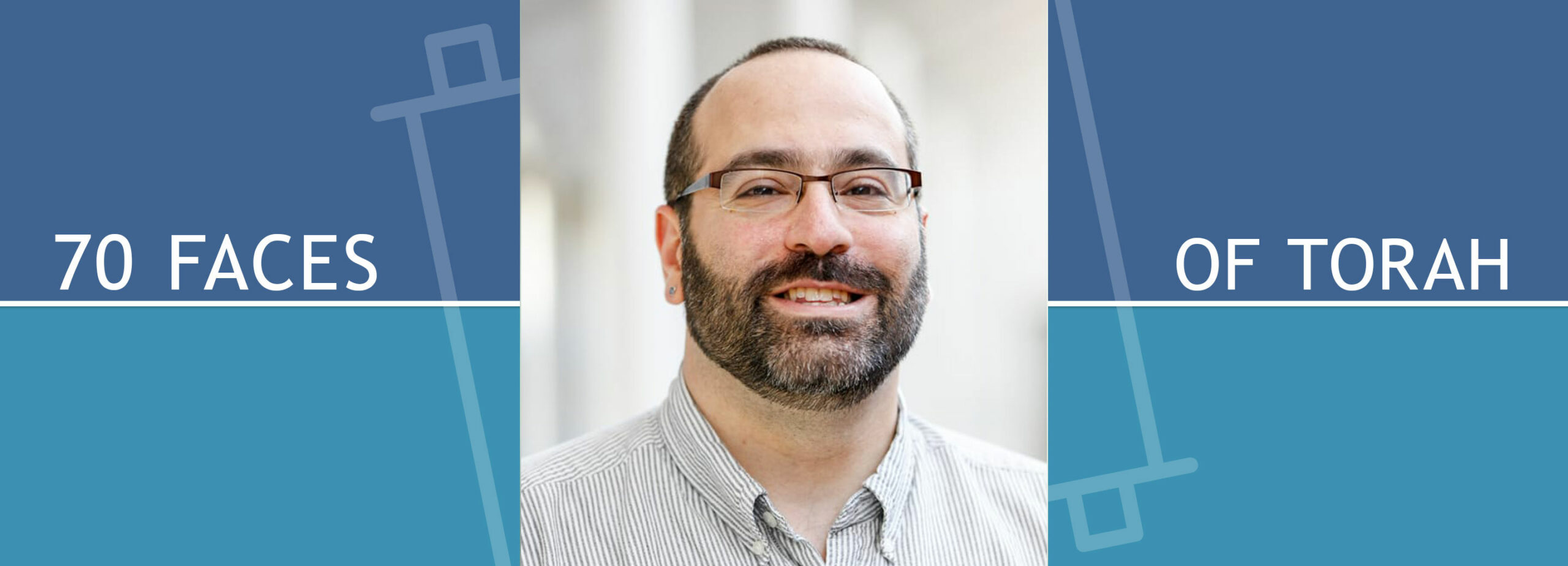Holidays Examining Our “Glory-Flaw”:
A Brief Exercise for Sefirat Ha-Omer

One of the joys of my work as a rabbi has been the opportunity to serve as the visiting rabbi at Netivot Torah: The Chatham Synagogue (TCS), in New York’s Hudson Valley. Founded twenty years ago by a small contingent of “weekenders” and permanent transplants from the Five Boroughs and other nearby locations, this independent “country shul” has been a key part of my spiritual and professional life for almost two decades.
Last weekend, I traveled to Chatham to facilitate Shabbat morning services and the weekly Torah discussion. The biblical reading for the week was parashat Emor (Leviticus 21:1-24:23), which contains, among other items, instructions about the ancient Israelite calendar. This includes a description of the Sabbath, the Three Pilgrimage Festivals, and the High Holy Days. (See Leviticus 23)
It also includes information about the practice of counting the omer: a fifty-day ritual count celebrating the unfolding of the spring harvest, beginning on the day when an omer measure of barley was offered in the Temple in Jerusalem and culminating with Shavuot, “The Feast of Weeks” (also called the “Festival of Reaping [Hag Ha’Katzir] among other names in the Torah; and later known as Pentecost [“Fifty” in Greek).
Over the centuries, this agricultural ritual evolved into a time for introspection and self-improvement as one journeys between the two great spring holidays of Pesach (Passover) and Shavuot. Symbolically, this involves reflection on the relationship between the story of the exodus from Egypt and the revelation at Mount Sinai (in keeping with rabbinic teachings about Shavuot). What does it mean to be a free person who consciously reenters a covenantal relationship with God through engagement in Torah every year?
The renewal of this ritual was aided significantly by the medieval mystics (Kabbalists), who associated each of the 49 days between the holidays with a different combination of spiritual-ethical virtues derived from their esoteric mapping of the elemental qualities—known as the sefirot (emanations)—of the Divine and of the human soul. Every day, one can contemplate her relationship to such qualities as “loving-kindness,” “rigor,” “beauty,” or “humility,” and the dynamic interaction of these soul traits. After all, if the Torah is supposed to serve as a guide for holy living, we need to carefully consider how we can best prepare ourselves to receive it anew and live into these sacred teachings.
Inspired by this medieval Kabbalistic innovation, my congregants and I read a brief source by the contemporary Jewish mystic, Rabbi Zalman Schachter-Shalomi (d. 2014), entitled “The Soul’s Flaw”:
Every soul… is possessed of a flaw. This flaw, like the fire of an opal, is also that soul’s special charm and attraction. The difference between the fire and the flaw is only in the refraction of the light. What we consider the person’s flaw can become a vice and that very same trait in a different light can become a virtue. The soul’s main task is to work on and with the flaw (Gate to the Heart, 1993, p. 36).
After reading this evocative text aloud (in which one can hear echoes of earlier Hasidic teachings), I asked the twenty or so people present to sit quietly for a few minutes and consider if there were any “glory-flaws,” as Reb Zalman refers to them, that they might want to explore on this 27th day of the Omer?
Using a gentle niggun (wordless melody) to call the group back together, I then invited people to share their thoughts and feelings. While it took this usually-talkative bunch a few minutes to begin speaking, soon enough several folks broke the ice and shared from the heart: One older man spoke of his fierce loyalty to friends and its shadow side: the need for external approval. A woman in her late thirties shared her struggle to balance her organizational expertise and her need for control. A third person reflected on the subtle difference between being a good judge of character and being judgmental.
After we finished this exercise and wound down our time together with kiddush (blessing over wine or grape juice and light refreshments), a member of the group wished me “Shabbat Shalom” (a peaceful Sabbath) and quipped, “That was a powerful experience; it felt a little like group therapy.” My first instinct was to try and deconstruct his comment, not wanting to allow him to collapse these activities too easily (or cynically). Instead, I paused for a moment and shared with him a statement I heard years ago attributed to the German-Jewish philosopher and educator Ernst (Akiva) Simon (d. 1988): “The people I pray with I cannot speak with, and the people I speak with I cannot pray with.” Without missing a beat, my conversation partner added, “And today we were able to do both.”
As I made my way home from synagogue that afternoon, I thought about another teaching from Reb Zalman. He often taught people to remember that our inherited liturgies and ceremonies are “freeze-dried,” and that we need to add water and stir! That is to say, while our forebears may provide us with wise and beautiful rites and litanies, we need to revitalize them in our particular time and place, pouring our experiences and intentions into these practices. In exploring sefirat ha’omer with my community, I felt blessed to be able to help folks engage in this age-old ritual and to witness them renew it through their brave and tender reflections.
Rabbi Or Rose is Director of the Miller Center for Interreligious Learning & Leadership at Hebrew College in Newton Centre, Mass.

